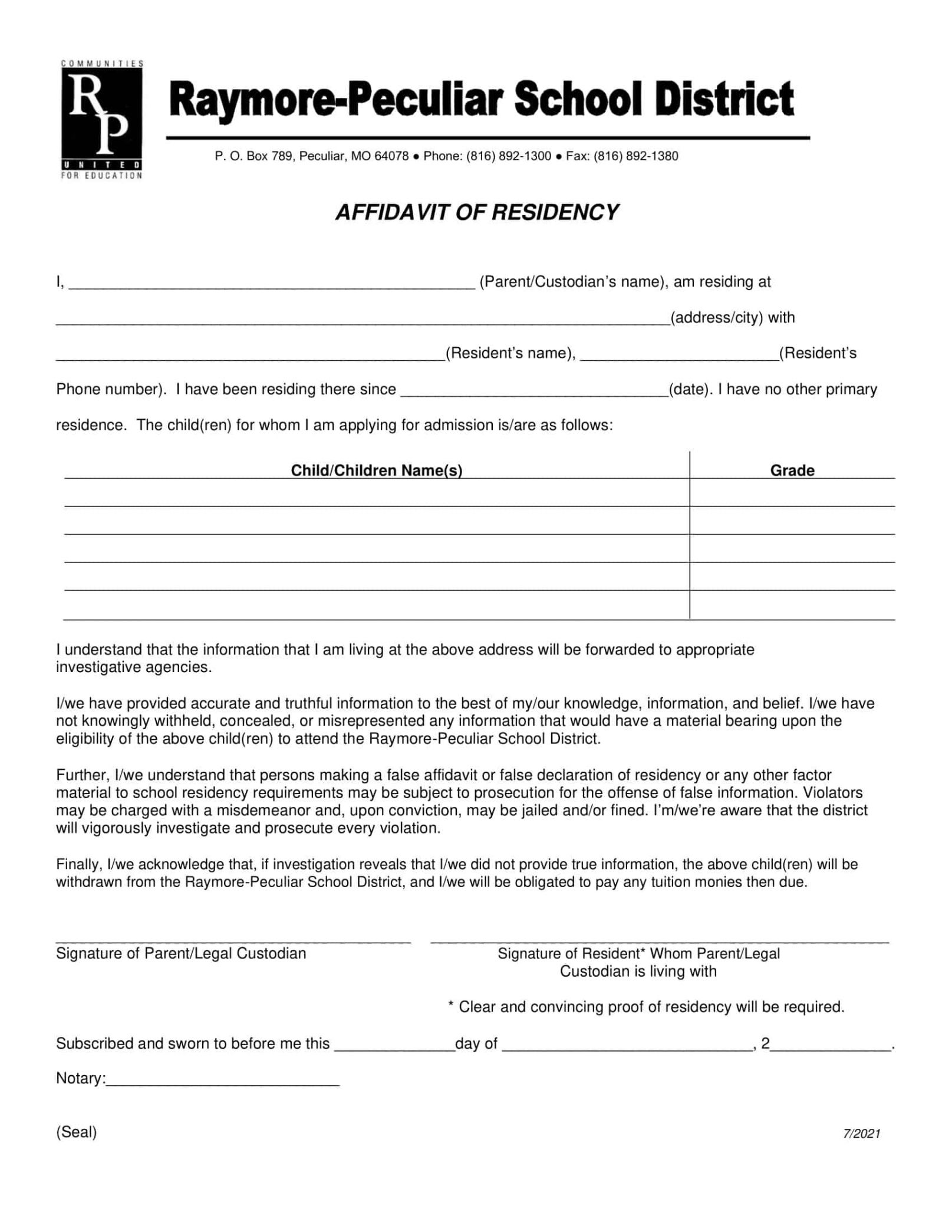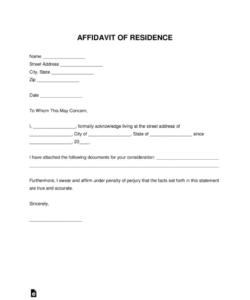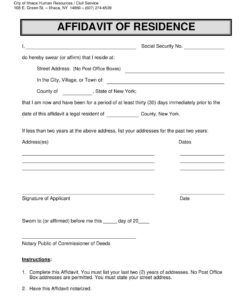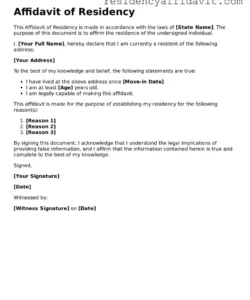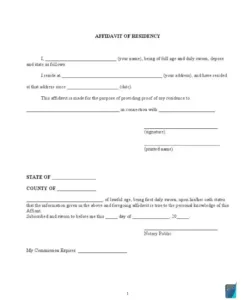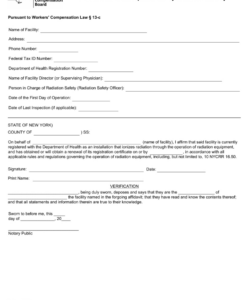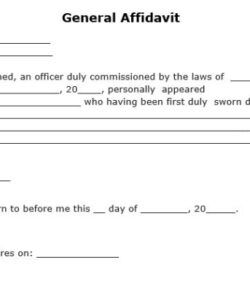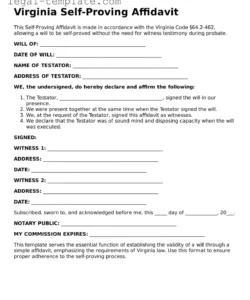Landlord affidavit of residence template. Ever felt the need to swear something under oath, but were overwhelmed by legal language and intimidated by complex forms? You’re not alone! Legal declarations, those legal affirmations confirmed by oath or affirmation, might appear complicated, but they don’t have to be. They’re used in all sorts of cases, from simple proof of residency to additional proof in court hearings. The good news is, finding a reliable document is easier than you think. Getting started is often the main challenge.
Picture needing to confirm your residency, document your finances, or confirm your civil status. An affidavit can do each of these. It’s a versatile legal document, but you must complete it carefully. Leaving out details or poor language choices can weaken its impact or even prevent it from being accepted. But what if you aren’t a lawyer? That’s where a sample form becomes your legal support. It offers a structure, leading you through what’s required and keeping it legally sound.
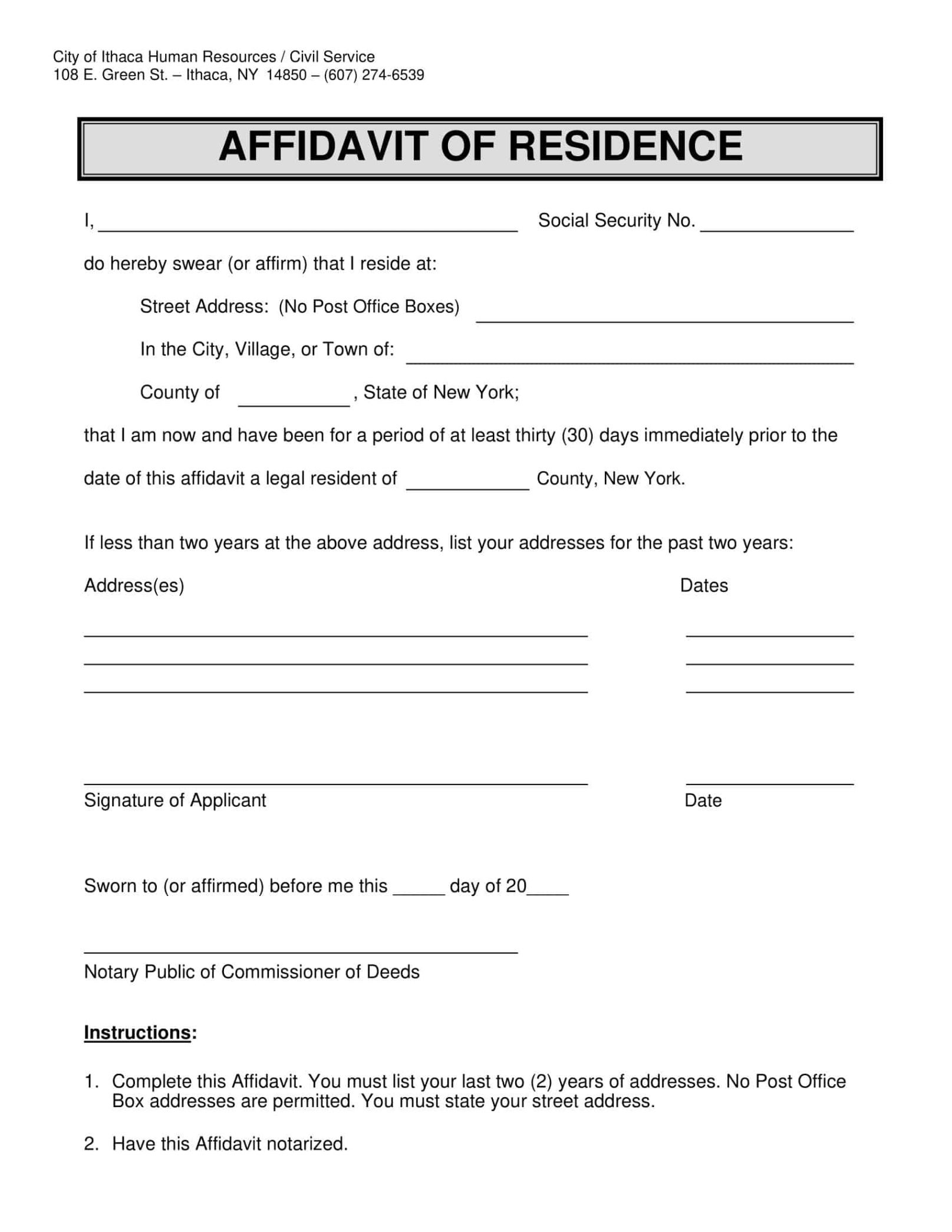
At its core, a sworn legal statement serves as a truthful account under oath. It’s a legally sworn document or affirmation before a designated legal officer, such as a notary public. This legal commitment adds a level of seriousness and credibility to the statement, making it usable in a courtroom. The declaring individual, the person making the statement, is essentially taking responsibility for the accuracy of the information presented.
So, when might you need one? Affidavits are used in many circumstances. They are often used in judicial cases as evidence. For example, a witness might provide an affidavit explaining what they experienced. They are also common in governmental processes, such as applications for permits or licenses. You might need one to establish your address, to support a claim for damages, or even to attest to financial claims. Basically, any situation where you need to legitimately declare something to be true could call for an affidavit. Think of it as an official statement that can be used as proof.
The standard layout of an affidavit typically includes a document title (showing which court or matter it pertains to), a personal identification section (listing your name and contact information), a series of sequential statements containing the information you’re affirming, a section for signing, and a affirmation clause (confirming that you took an oath before an official). The jurat is a crucial element, as it adds official verification that makes the affidavit official.
So, what makes an affidavit officially valid? There are several key elements. First, it must clearly state who is declaring the information, including their identifying information. Second, it needs to state that the affiant is swearing to the truth of the content. Third, the statement should be grounded in what the affiant knows to be true. Finally, the affidavit needs to be signed by the affiant in the presence of an authorized official, who will then certify the affidavit, ensuring authenticity and confirming legal procedure.
The internet is an endless library of information, and free affidavit templates are no exception. However, with countless choices online, it’s important to choose a template that’s credible and appropriate for your case. Start by searching recognized law sources, public sector portals, or legal aid organizations. These sources are more likely to offer templates that are accurate, up-to-date, and court-approved. Be mindful of websites that look sketchy or offer templates of unclear authorship, as these may include mistakes or incomplete sections that could compromise its legality.
After identifying a suitable form, look it over thoroughly to ensure that it has the essential fields and details. Look for a well-structured and easy-to-follow design that’s not hard to complete. Pay close attention to the terminology applied, and make sure that it’s in line with your region’s laws. Laws and regulations can vary significantly from one state or country to another, so it’s important to select a form that’s suited to your specific legal context.
When filling out the template, be as thorough and clear. Don’t rely on vague or ambiguous statements; instead, use verifiable information and relevant details. Use clear and concise language to minimize misunderstanding. If you’re not sure what to write, consult with a legal professional or do some research online to find examples of similar affidavits.
While a free affidavit template provides a good starting structure, note that you must tailor it. You’ll need to customize the template to fit your specific situation. This means completing every section with care with valid and specific details. Don’t simply copy and paste information without reviewing it for accuracy and relevance. Tailor the language to reflect your own voice and style. The more targeted and individual your affidavit is, the more legally solid it becomes.
Importantly, make sure your affidavit is officially notarized. This is a crucial step in making it a recognized declaration. Contact a licensed notary office and plan to complete the notarization. The notary will check your credentials, observe your signing, and stamp the document, confirming that you have acknowledged the facts. Without proper notarization, your affidavit may not be admissible in court or valid in administrative settings.
Identifying a credible provider and adjusting it to your case will go a long way in ensuring that your affidavit is proper and court-ready. There are many free affidavit forms available. Reach out to a legal expert if needed. Remember that an affidavit is a declaration, and should be treated as such. Truth and precision are essential. This guidance should get you started with creating a valid affidavit. This does not constitute legal counsel.
